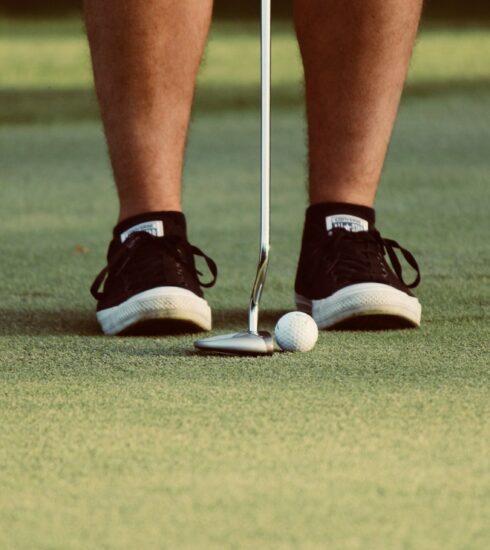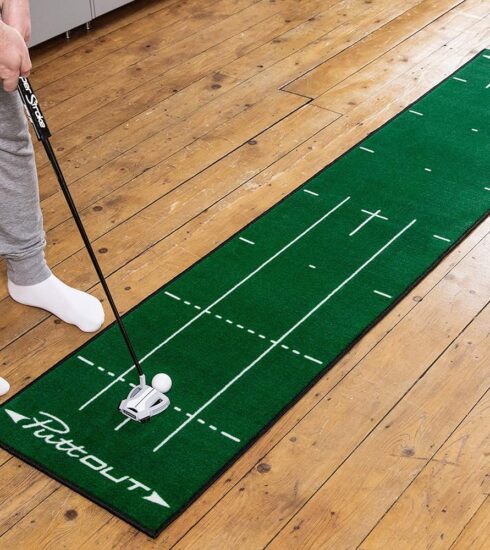Mastering the Basics: Affordable Golf Instruction and Budget-Friendly Ways to Improve Your Game
Key Takeaways
- You don’t need expensive lessons to get better at golf.
- Free online resources, home practice, and budget-friendly equipment can help.
- Local courses and driving ranges offer affordable ways to refine your game.
- The mental game and fitness matter as much as technique.
- Tracking progress keeps you improving over time.
This post contains affiliate links. If you purchase through these links, I may earn a small commission at no additional cost to you. Your support helps keep this site running—thank you!
Golf is one of those sports that seems expensive from the outside. Fancy clubs, private lessons, and exclusive courses make it feel like a game for the wealthy. But the truth? You don’t need to spend a fortune to get better. Affordable golf instruction is more accessible than most people realize—you just have to know where to look.
There are plenty of ways to improve your swing, sharpen your short game, and lower your scores without maxing out your credit card. From practicing at home to using free online resources, and even taking advantage of budget-friendly equipment, there’s no shortage of low-cost strategies to step up your game.
This guide breaks down exactly how to improve at golf without draining your wallet. Whether you’re just starting or looking to refine your skills, these free and budget-friendly methods will help you play better golf while keeping costs in check.
1. Practice at Home
Can you really improve your golf game without stepping onto a course? Absolutely.
Some of the best players in the world spent hours perfecting their mechanics in their own living rooms and backyards. Here’s how you can do it too:
- Create a putting area – A small rug, a cup, and a golf ball are all you need.
- Check your form – Use a full-length mirror to analyze your grip, stance, and swing.
- Swing without a ball – A broom handle or weighted club can build muscle memory.
- Use impact tape – It tells you exactly where the clubface meets the ball.
- Improve tempo – Metronome apps help create a smooth, consistent rhythm.
Bonus Tip:
Practice gripping the club while watching TV. The more natural it feels, the better your shots will be.
2. Utilize Free Online Resources
The internet is packed with affordable golf instruction content. You just need to know where to look.
Best Free Learning Resources:
- YouTube Channels – Rick Shiels, Meandmygolf, Golf Sidekick (great for casual players)
- Golf Blogs & Articles – Many sites break down techniques step by step.
- Reddit & Forums – r/golf has tips from experienced players.
- Golf Apps – Swing analysis and GPS tools can improve your course management.
If you’re not using these resources, you’re missing out on free lessons.
3. Budget-Friendly Equipment
Golf gear can be pricey. But you don’t need the latest driver to play well.
Where to Find Cheap Golf Equipment:
- Used Clubs – Check Facebook Marketplace, eBay, and second-hand stores.
- Borrow Clubs – Try before you buy by renting or borrowing.
- Buy Last Year’s Model – New releases drive down older club prices.
- Skip the Name Brands – Many lesser-known brands perform just as well.
Must-Have Accessories (That Won’t Break the Bank):
| Item | Reason You Need It | Budget Option |
| Golf Glove | Improves grip and prevents blisters | $10-$20 (Amazon) |
| Golf Balls | You will lose them. Buy in bulk. | Used balls ($10/dozen) |
| Athletic Shoes | Fancy golf shoes aren’t essential | Running shoes work fine |
| Tees & Markers | Essentials for every round | Under $5 |
4. Maximize Driving Range Sessions
Hitting balls at the range without a plan is a waste of time and money. Here’s how to make your sessions count:

- Start with a goal – Work on grip, tempo, or a specific shot.
- Divide your balls – Don’t just blast away. Break them into warm-up, focus, and finish phases.
- Practice your pre-shot routine – This builds consistency on the course.
- Use fewer balls, more swings – Slow, deliberate practice beats mindless hitting.
Twilight hours often have discounts, so check local range deals.
5. Explore Local Golf Facilities
Many public courses offer affordable golf instruction options if you know where to look:
- Free putting greens – Most courses have them, no purchase required.
- Discounted twilight rates – Play in the evening for half the price.
- Walk instead of riding – It saves money and improves fitness.
- Find beginner-friendly courses – Some offer low rates for new players.
Some courses also have beginner clinics that cost less than private lessons.
6. Short Course Practice
Par-3 and executive courses are hidden gems for practice. Why?
- They focus on short game – where most players lose strokes.
- Rounds are quicker – 9 holes instead of 18 saves money.
- Fees are lower – Some charge as little as $10 per round.
Short courses force you to work on accuracy, not just distance.
7. Mental Game Development
Golf is as much mental as it is physical. Train your brain for better scores:
- Visualize shots before swinging – See success before execution.
- Control breathing – Deep breaths keep nerves in check.
- Develop patience – Rushing leads to mistakes.
- Read books on golf psychology – Many libraries have them free.
A strong mental game turns bogeys into pars.
8. Learn from Watching Professionals
You don’t need lessons if you study the best players.
How to Watch Golf Like a Pro:
- Observe their pre-shot routine – It’s always the same.
- Study course management – Where do they aim?
- Watch short game decisions – Chipping, pitching, putting.
Turn golf tournaments into free masterclasses.
9. Incorporate Golf-Specific Exercises
You don’t need a gym to build golf strength. Try these at home:
- Core workouts – Planks, sit-ups, twists.
- Balance drills – Stand on one leg while putting.
- Flexibility stretches – Hip and shoulder mobility boosts power.
Better fitness = better golf. No equipment required.
10. Track Your Progress
If you don’t track, you don’t improve.
- Use a golf journal – Record swings, scores, and mistakes.
- Download free apps – Many offer shot tracking and stat analysis.
- Set improvement goals – Small wins build confidence.
Tracking helps spot patterns that lower scores.
FAQs
1. What’s the best free way to improve my golf swing?
Watch professional golfers and mimic their mechanics in a mirror.
2. How do I find cheap golf clubs?
Check thrift stores, online marketplaces, or local golf swap meets.
3. Can I get better at golf without a coach?
Yes. Use free resources, practice at home, and track your progress.
4. How much should a beginner spend on golf?
Under $200 if buying used clubs, a glove, and some balls.
5. What’s the most important part of improving?
Consistency. Practice often, even if it’s just 10 minutes a day.
Final Thought:
You don’t need a big budget to get better at golf. Use free resources, practice smart, and work on your mental game. Affordable golf instruction is everywhere—you just have to take advantage of it.






